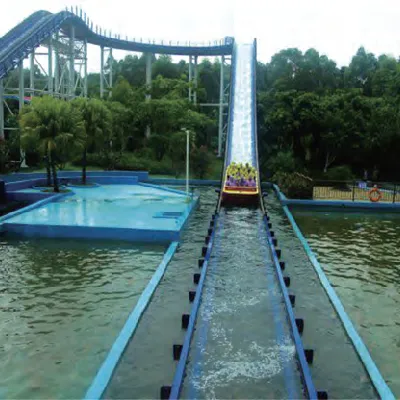- Albanian
- Arabic
- Belarusian
- Bengali
- Czech
- English
- French
- German
- Hebrew
- Hungarian
- Indonesian
- irish
- Italian
- Japanese
- kazakh
- Persian
- Russian
- Thai
- Uzbek
- Vietnamese
basic roller coaster design
Basic Roller Coaster Design
Roller coasters have long been a beloved attraction in amusement parks around the world, offering thrills and excitement to millions of riders each year. Behind the exhilarating experience lies the intricate and fascinating world of roller coaster design. From initial concept sketches to the final ride, several key principles and components come into play to create a safe and enjoyable ride.
Understanding the Basics
At its core, a roller coaster is a combination of engineering, physics, and artistry. The primary goal is to create a ride that is both thrilling and safe for all participants. One of the first steps in roller coaster design is understanding the forces that will act upon the riders. The key forces include gravitational force, centripetal force, and friction. These forces dictate how the train moves along the track and how the riders experience the ride.
Track Design
The layout of the track is crucial in roller coaster design. Designers often begin with a series of sketches that outline the coaster's pathways, including hills, loops, and turns. The height and steepness of each hill are calculated to ensure that the train has enough momentum to complete the course while delivering the desired thrills. For example, steeper drops generally lead to higher speeds and more intense sensations. Loops and corkscrews add to the complexity and excitement, requiring careful calculations to ensure the train can safely navigate these features.
Elevation and Speed
Two vital components are elevation and speed. High elevation points create thrilling drops, while speed enhances the sense of excitement. A well-designed coaster will have a balance between these elements to ensure that riders experience the adrenaline rush without sacrificing safety. Designers utilize computer simulations to model different designs and assess their performance before physical construction begins.
basic roller coaster design

Safety Considerations
Safety is paramount in roller coaster design. Engineers must adhere to rigorous safety standards and regulations set by government bodies and amusement industry organizations. This includes selecting appropriate materials, designing secure restraints, and ensuring that the ride can withstand various environmental factors. Additionally, the structure must be designed to endure the stresses of repeated use and the forces generated during the ride.
The Role of Technology
Modern advancements in technology have transformed roller coaster design. Computer-aided design (CAD) software allows engineers to create detailed models and simulations of coasters, making it easier to fine-tune elements before construction begins. Virtual reality can also play a role in helping designers visualize the ride experience from a rider's perspective, ensuring that the final product meets both aesthetic and experiential goals.
The Experience
The fundamental aim of roller coaster design is to create a memorable experience. Designers often incorporate themes, music, and unique storytelling elements to enhance the ride's overall atmosphere. The combination of speed, drops, and thematic elements creates an immersive environment that can transport riders out of their everyday lives and into a state of exhilaration.
Conclusion
In conclusion, the design of roller coasters involves a complex interplay of physics, engineering, and creativity. By balancing thrilling elements with stringent safety measures, designers create rides that not only push the boundaries of excitement but also ensure rider safety. As technology continues to evolve, the future of roller coaster design promises to bring even more innovative and thrilling experiences for amusement park enthusiasts around the globe. Whether you are a thrill-seeker or an engineering aficionado, the world of roller coaster design holds something fascinating for everyone.
-
Flume Ride-Hebei Zhipao Amusement Equipment Manufacturing Co., Ltd.|Thrilling Water Attraction&Customizable DesignJul.30,2025
-
Flume Ride - Hebei Zhipao Amusement Equipment | Water Coaster, Thrilling DescentJul.30,2025
-
Flume Ride - Hebei Zhipao | Thrilling Water AttractionJul.30,2025
-
Flume Ride: Thrilling Water Attraction by Hebei Zhipao|Log Flume Manufacturers&Flume Ride DesignJul.30,2025
-
Flume Ride-Hebei Zhipao Amusement Equipment Manufacturing Co., Ltd.|Thrilling Water Coaster, Safe DesignJul.30,2025
-
Flume Ride-Hebei Zhipao Amusement Equipment Manufacturing Co., Ltd.|Thrilling Water Attraction, Safe DesignJul.30,2025
